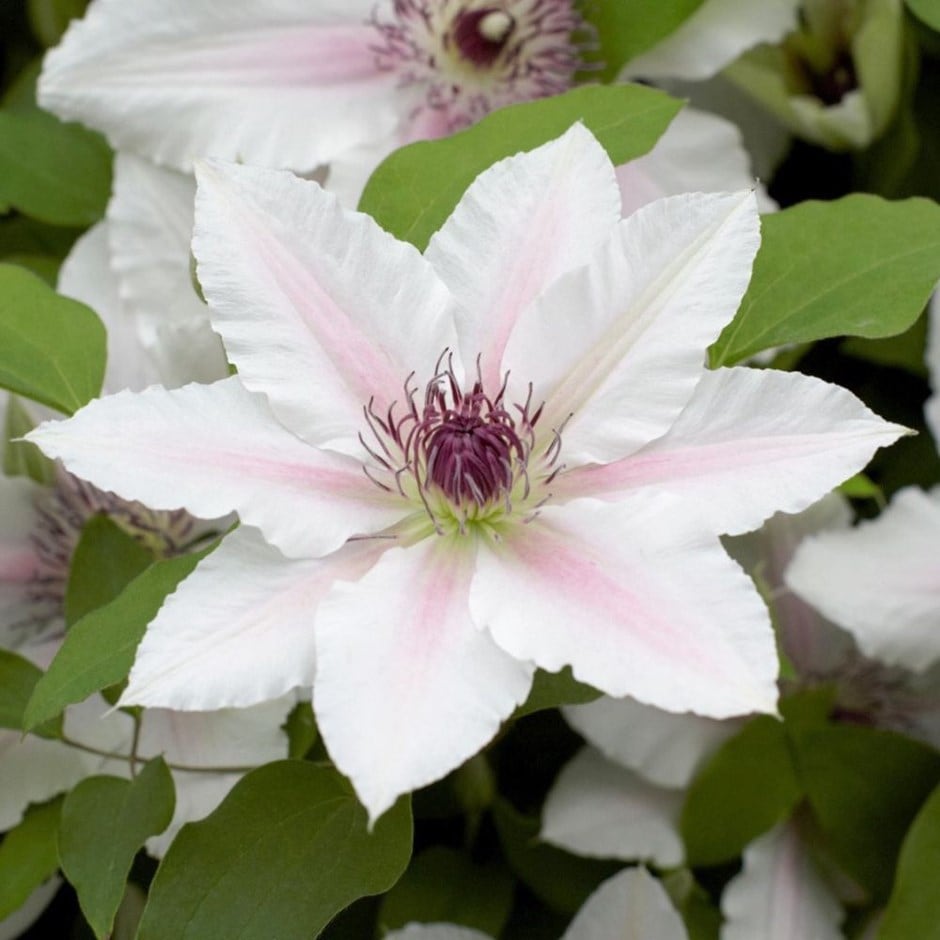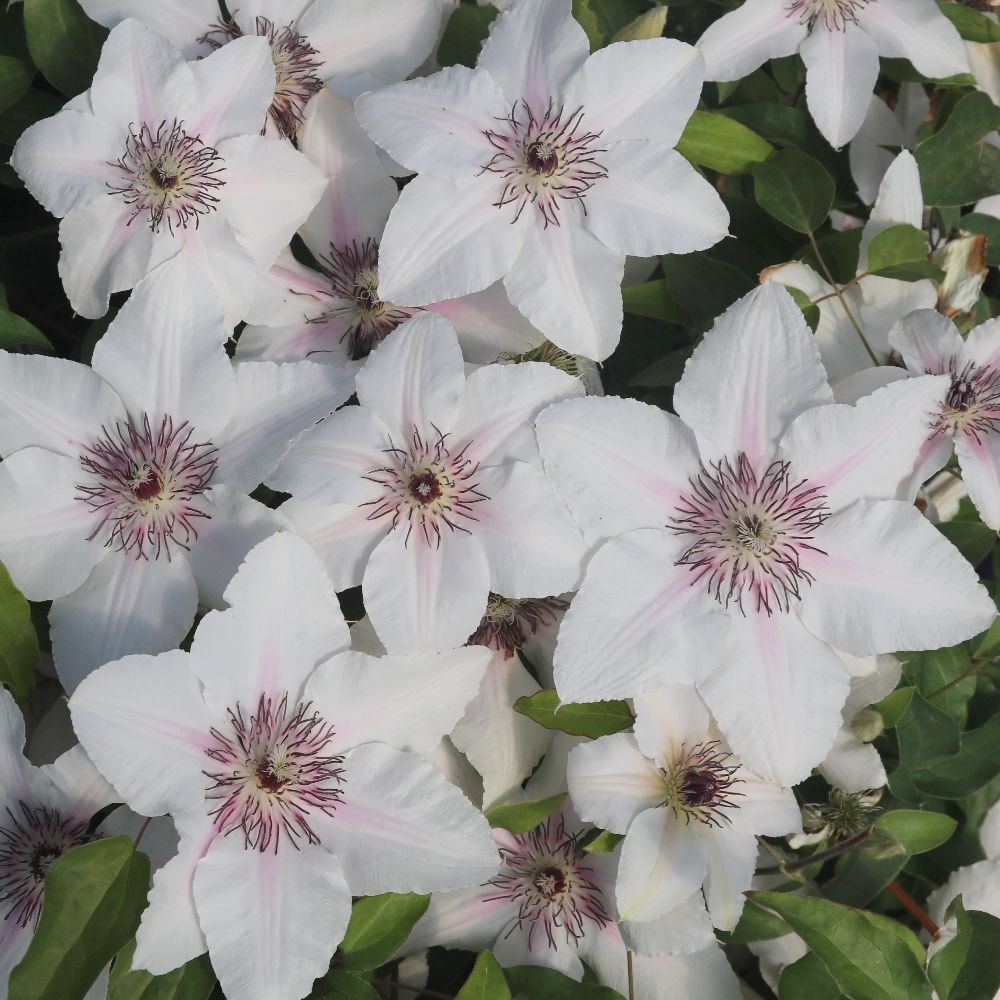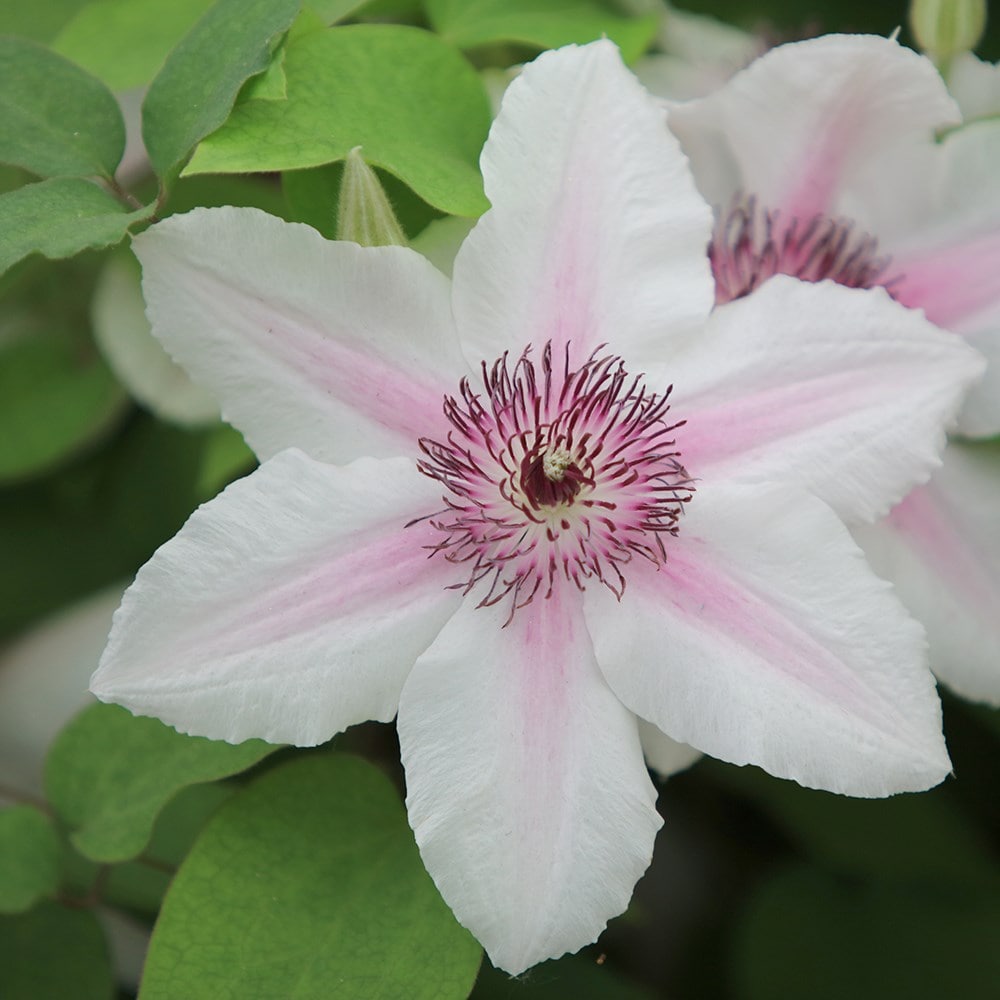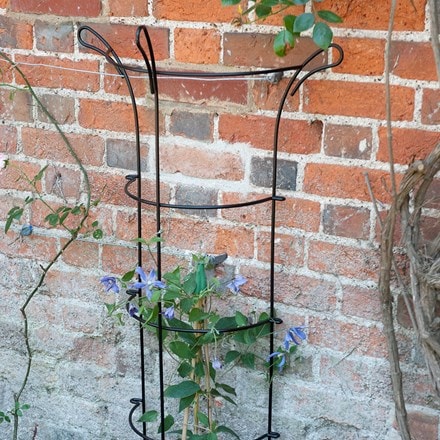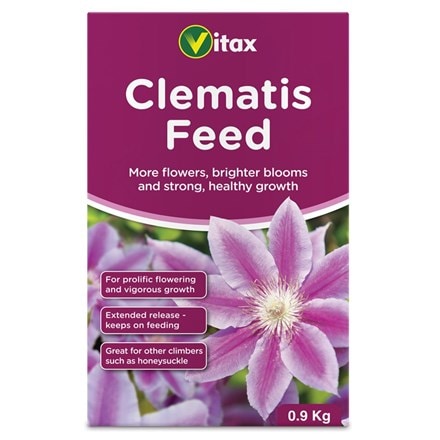Eventual height & spread
Clematis The Countess of Wessex ('Evipo073') (PBR) (Boulevard Series)
clematis el (group 2)
- 3 litre pot | 60cm cane
- £26.95
- available to order from autumn
Delivery options
- Standard £5.99
- Position: full sun
- Soil: fertile, well-drained soil
- Rate of growth: fast-growing
- Flowering period: July to September
- Hardiness: fully hardy
A long-flowering, creamy white ‘apple blossom’ clematis with a blush pink bar running along the centre of each petal. A wide central boss of reddish-purple stamens completes the flower (up to 17cm in diameter) making ‘Countess of Wessex’ a stunning and modest climber that would compliment most planting schemes from late spring to early summer and again from late summer to early autumn. Great for growing in a container, a pot or the patio garden, or for sheer indulgence when scrambling through Rosa ‘Dunham Massey’.
To avoid dry conditions, and to ensure good soil contact around the rootball, we advise planting climbers at least 30cm (12in), and preferably 45-60cm (18-24in) away from the base of a wall or fence. An even larger distance should be maintained when planting climbers beside an existing tree or shrub.
Clematis are happiest when their roots are kept cool and moist, so try to plant them where the base of the plants will be lightly shaded by other, lower-growing species. Otherwise, use a clematis root protector, or top-dress the rootball (avoiding the immediate crown), with a generous layer of shingle or pebbles.
Remove dead and damaged stems before growth begins in early spring, cutting all remaining stems back to where strong buds are visible.
Apply a slow-release balanced fertiliser and a mulch of well-rotted garden compost around the base of the plant - again avoiding the immediate crown.
Clematis are happiest when their roots are kept cool and moist, so try to plant them where the base of the plants will be lightly shaded by other, lower-growing species. Otherwise, use a clematis root protector, or top-dress the rootball (avoiding the immediate crown), with a generous layer of shingle or pebbles.
Remove dead and damaged stems before growth begins in early spring, cutting all remaining stems back to where strong buds are visible.
Apply a slow-release balanced fertiliser and a mulch of well-rotted garden compost around the base of the plant - again avoiding the immediate crown.
- Humans: Skin irritant; Pets: Harmful if eaten
Goes well with
Climber wall support - dark brown
H120cm (18cm legs)
£42.99
In stock (shipped within 2-3 working days)
